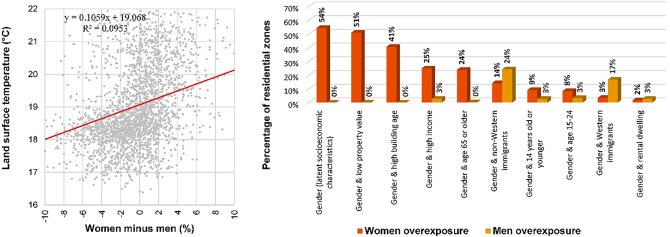
Persbericht
Publication B.Mashhoodi - Feminization of surface temperature
Full title: B. Mashhoodi (2021), Feminization of surface temperature: Environmental justice and gender inequality among socioeconomic groups, Urban Climate, Volume 40 (link to online article)
Abstract:
This study seeks answers to whether certain gender groups are overexposed to land surface temperature (LST) and whether or not the levels of such overexposure differ across socioeconomic groups and locations? The results of a geographically weighted regression model on 2400 Dutch residential zones show that LST is feminized. Gender composition alone explains about 10% of LST variations, regardless of other socioeconomic characteristics. For a 1% increase in women's population in a residential zone, LST increases by more than 0.1 °C. When socioeconomic characteristics are considered, the model explains more than 75% of variations. It shows that women living in low-value and relatively-old buildings are more exposed than men in 51% and 41% of the zones. Older-than-65-years and high-income women are more exposed than men in 24% and 22% of zones. Feminization of LST has a spatial pattern, too. It is more likely to occur in a moderate climate than in areas with extreme cold or warm climates. This study discusses the results and offers a series of possible explanations: Women's overrepresentation in urbanised areas, gender imbalance in economic sectors, suburbanisation of poverty, unequal access to green, different life expectancy among gender groups, and high variation of LST in moderate climates.
